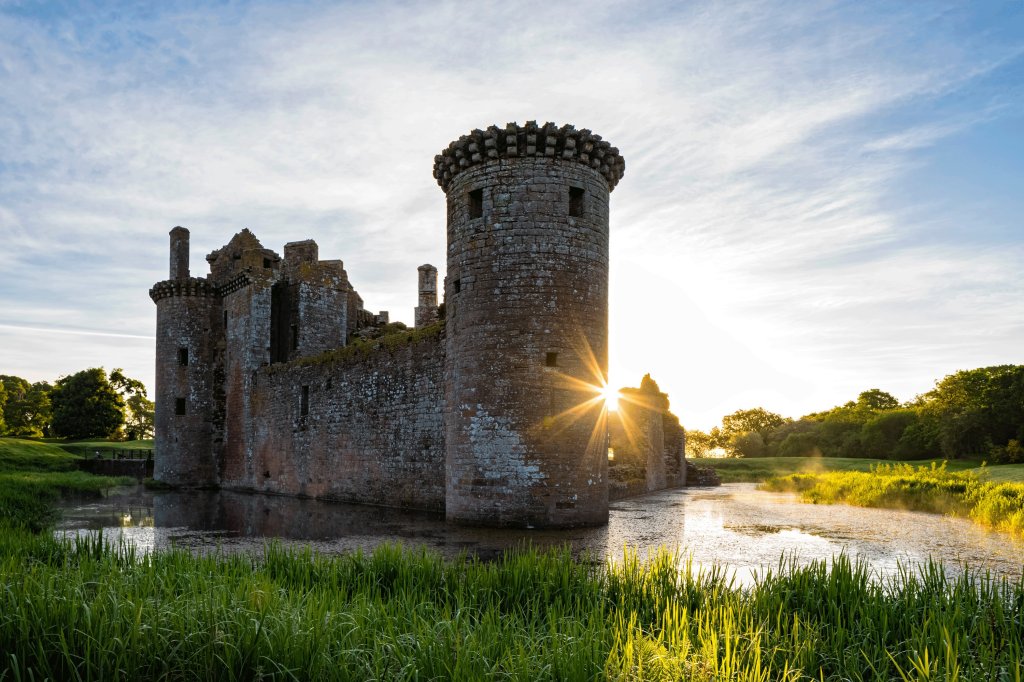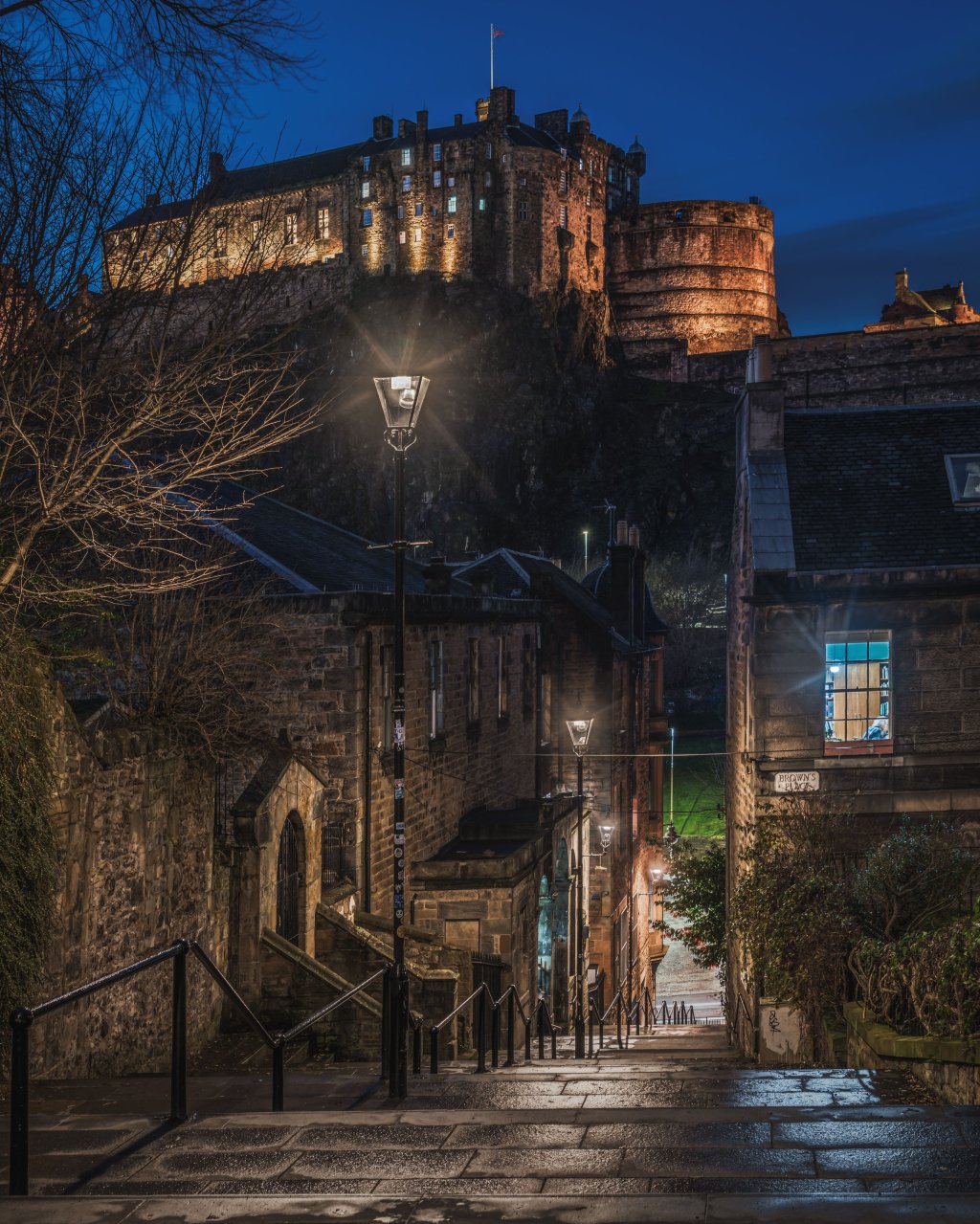8 Hidden Castles in Scotland
Scotland has no shortage of famous castles, but not every visit needs to be about ticking off the biggest names. Beyond Edinburgh, Stirling, and Eilean Donan are places that feel quieter, more personal, and just as full of history.
Scotland has no shortage of famous castles, but not every visit needs to be about ticking off the biggest names. Beyond Edinburgh, Stirling, and Eilean Donan are places that feel quieter, more personal, and just as full of history. These hidden gems are often easier to explore, with fewer crowds and plenty of atmosphere. Here are eight castles where you can step back in time and enjoy Scotland’s past at a gentler pace.
Hermitage Castle, Borders
Built in the 13th century to guard the wild Borderlands, Hermitage quickly gained a fearsome reputation. Its thick walls and brutal architecture weren’t designed for comfort, they were designed to intimidate. The castle changed hands between English and Scottish lords over the centuries, often through betrayal and bloodshed. One of its most famous episodes came in 1566, when Mary Queen of Scots rode a gruelling 25 miles on horseback to visit the wounded Earl of Bothwell, sparking rumours of their relationship. Stories of hauntings linger too, adding to the castle’s unsettling aura.
Managed by: Historic Environment Scotland
Opening: April–September (check website for exact dates)
Tickets: Around £6 adult
Website: Hermitage Castle – HES
Hermitage Castle
Discover a history filled with intrigue, murder, torture and treason. This awesome, eerie ruin has plenty of tales to tell, thanks to its role as “the guardhouse of the bloodiest valley in Britain”.
Craigmillar Castle, Edinburgh
Craigmillar was first built by the Preston family in the 15th century and later passed to the Gilmours. Despite its elegance, it’s best remembered as a refuge for Mary Queen of Scots. After the birth of her son James VI, she stayed here to recover, and it was within these walls that nobles plotted the downfall of her unpopular husband, Lord Darnley. The castle’s sprawling courtyards, hidden staircases, and preserved tower give a vivid sense of how a noble household lived. Its gardens, once famed for orchards and deer parks, still make a peaceful escape from the city.
Managed by: Historic Environment Scotland
Opening: Year-round
Tickets: Around £7.50 adult
Website: Craigmillar Castle – HES
Craigmillar Castle
Step inside Edinburgh’s ‘other castle’, which stood a mile outside the old city walls, providing a retreat from Scotland’s capital. Craigmillar Castle was close to the political cauldron of Edinburgh, but pleasingly separate from it.
Castle Stalker, Argyll
Castle Stalker’s story begins with the MacDougalls, who built it in the 14th century. Later it became a prized possession of the Stewarts of Appin, caught in clan feuds and political intrigue. In the 1600s, the Campbell clan seized it, and it fell into decline before being rescued centuries later. Its isolated setting made it easy to defend but hard to live in, and that sense of remoteness remains. Fans of Monty Python and the Holy Grail might recognise it as “Castle Aaargh” from the film’s closing scenes.
Ownership: Private
Opening: Guided tours by advance booking (May–Sept)
Tickets: Tour price on request
Website: Castle Stalker
Castle Stalker
Castle Stalker – in the Gaelic, Stalcaire, meaning Hunter or Falconer – is believed originally to have been the site of a Fortalice (a small fortified building) belonging to the MacDougalls when they were Lords of Lorn, and built around 1320.
Castle Tioram, Ardnamurchan
Castle Tioram was the seat of Clan Ranald, a branch of Clan Donald, and has stood since at least the 1200s. Strategically placed on Loch Moidart, it gave the clan control of the sea routes around Ardnamurchan. In 1715, the castle’s chief set it ablaze rather than see it fall into enemy hands during the first Jacobite rising. Since then, it has remained a dramatic ruin, its charred history etched into every stone. Local lore claims the castle is haunted by clan ghosts, adding mystery to its tidal setting.
Ownership: Private ruin, interior closed today
Access: Reachable on foot at low tide (interior closed for safety)
Tickets: Free
Tips: Check tide times before visiting
Castle Tioram
Castle Tioram is a ruined castle that sits on the tidal island Eilean Tioram in Loch Moidart. It is west of Acharacle, approximately 80 km (50 mi) from Fort William
Smailholm Tower, Borders
Standing tall against the elements, Smailholm Tower was built by the Pringle family as a fortified home during the era of Border raiding. Its stout walls and hilltop perch made it easier to withstand attacks, though not always successfully. Centuries later, the tower inspired Sir Walter Scott, who played here as a boy and absorbed the legends and ballads of the Borders. He later immortalised Smailholm in his writing, cementing its place in Scotland’s literary as well as military history. Inside, visitors can see displays of Border ballads and Scott-inspired artworks.
Managed by: Historic Environment Scotland
Opening: April–September
Tickets: Around £6 adult
Website: Smailholm Tower – HES
Smailholm Tower
Visit a place that inspired Sir Walter Scott. Ancestors of the great Romantic novelist had called the tower home, and Scott learned the power of border ballads as a young infant living on the estate.
Caerlaverock Castle, Dumfries & Galloway
Caerlaverock has been besieged more than once, but none more dramatically than in 1300, when Edward I brought an army of knights to take it from the Scots. A famous medieval document, “The Roll of Caerlaverock,” records the heraldry of the knights who fought here, making the siege unusually well-documented. The Maxwell family made the triangular castle their seat, and it was rebuilt and refortified several times until Cromwell’s forces dismantled it in the 17th century. Today its moat, battlements, and red sandstone walls still impress.
Managed by: Historic Environment Scotland
Opening: Year-round
Tickets: Around £7.50 adult
Website: Caerlaverock Castle – HES
Caerlaverock Castle
A wide moat, twin-towered gatehouse and lofty battlements make Caerlaverock the epitome of the medieval stronghold. Learn all about its turbulent history as a castle caught up in border conflicts.
Huntly Castle, Aberdeenshire
Huntly Castle began as a motte-and-bailey in the 1100s before becoming the grand seat of the Gordon family, one of Scotland’s most powerful dynasties. The ruins reveal layers of history: medieval defence, Renaissance splendour, and later decline. Its Renaissance carvings, detailing royal arms, Latin inscriptions, and ornate fireplaces, mark it as one of the finest of its era. The Gordons were at the heart of political life, and their shifting loyalties in turbulent times often brought both fortune and disaster.
Managed by: Historic Environment Scotland
Opening: Year-round
Tickets: Around £7.50 adult
Website: Huntly Castle – HES
Huntly Castle
Visit the seat of one of medieval and Renaissance Scotland’s most powerful families. Heraldic sculpture and inscribed stone friezes were fitting for the home of the earls of Huntly, now a noble ruin.
Duart Castle, Isle of Mull
Duart has stood since the 13th century, when the MacDougalls first built it. It later passed to the Macleans, fierce clan leaders whose influence stretched across the Hebrides. In the 17th century, it was besieged by Cromwell’s navy and eventually abandoned. For nearly two centuries it crumbled until Sir Fitzroy Maclean restored it in 1911, returning it to clan pride. Duart has since appeared in films like Entrapment and still hosts Maclean clan gatherings today, making it one of the few castles that feels truly “alive” with its original lineage.
Ownership: Clan Maclean (private)
Opening: Spring–Autumn (closed in winter)
Tickets: Around £9 adult
Website: Duart Castle
Duart Castle
For over 700 years, Duart Castle, the seat of Clan Maclean, has dominated the view to the Sound of Mull and Loch Linnhe with its huge curtain walls and solid keep









